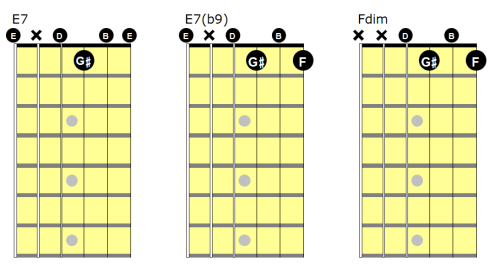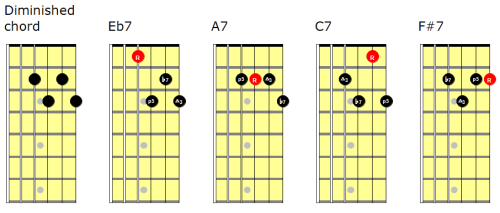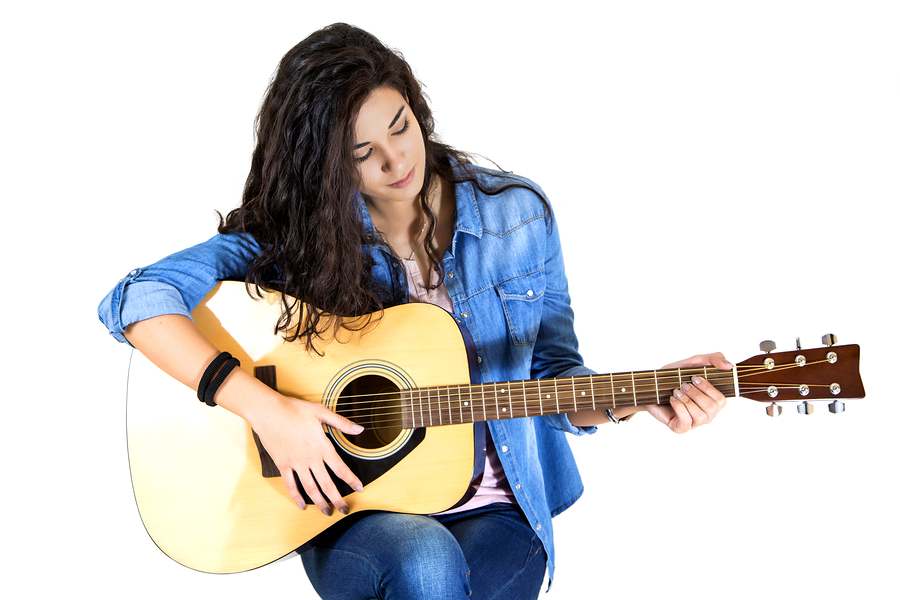 From Wes Montgomery to Al Di Meola, a huge number of classic and contemporary jazz guitarists have made their mark on the music world. While it might seem difficult, it's surprisingly easy to learn how to play jazz guitar with the right materials.
From Wes Montgomery to Al Di Meola, a huge number of classic and contemporary jazz guitarists have made their mark on the music world. While it might seem difficult, it's surprisingly easy to learn how to play jazz guitar with the right materials.
In this guide, you'll learn the basics of playing jazz guitar – from the most common scales and chords used in jazz music to the techniques and alternative tunings that form the basis of some of the most popular jazz pieces and guitar solos.
Ready to begin? Before you learn the specifics of jazz guitar, you'll need to master the basics of playing the electric guitar itself. Learn the fundamentals of guitar like scales, fingering, strumming, picking and theory in our Guitar Essentials course.
The theory of jazz guitar
 Modern jazz guitar has a lot in common with blues, rock and other modern styles of guitar. Many of the scales used in jazz music are also common in blues – basic scales like the pentatonic major and minor scales, for example.
Modern jazz guitar has a lot in common with blues, rock and other modern styles of guitar. Many of the scales used in jazz music are also common in blues – basic scales like the pentatonic major and minor scales, for example.
Almost all of the modes of the major scale are used in jazz guitar. For example, most jazz guitar licks and solos over minor chord progressions are composed (or in many cases, improvised) using the Dorian mode.
Other common modes in jazz guitar include the Mixolydian mode, which is the fifth mode of the major scale. The Mixolydian mode is frequently used in improvised jazz guitar melodies and solos.
In addition to the standard modes of the major scale, there are plenty of other scales used in jazz guitar. One of the most popular jazz scales is the Bebop scale, as well as its major, minor and dominant variations.
Do modes, scales and other musical theory terms confuse you? Modes are different variations on the standard major scale, with the beginning and end of each scale in different positions to create a completely different sound.
From intervals and chord structure to the different modes of the major scale, learn more about the scales used in jazz guitar for composition and improvisation with some quick lessons Jazz Guitar: Painless Scale Positions.
The technique of jazz lead guitar
 Just like rock and blues guitar, most jazz guitar pieces consist of two parts: rhythm guitar, which plays chord progressions, and lead guitar. Jazz lead guitar involves a wide range of different techniques, licks and picking styles.
Just like rock and blues guitar, most jazz guitar pieces consist of two parts: rhythm guitar, which plays chord progressions, and lead guitar. Jazz lead guitar involves a wide range of different techniques, licks and picking styles.
What separates jazz lead guitar from blues, modern rock and metal is the immense focus on improvisation. Many jazz pieces are built around basic chord progressions that make improvisation and lead guitar experimentation simple.
Improvising is a skill, just like learning to play scales and guitar solos quickly as you would in hard rock or heavy metal. The best lead guitar improvisers all share a good knowledge of scales and modes, allowing them to think up melodies as they play.
Another key part of improvising is having a bank of 'licks' in your memory. Licks are short musical phrases that last for one or two bars that you can use to fill in gaps in a guitar solo or melody and bridge two different improvisations together.
Hard Rock Guitar Improvising is designed for players interested in rock and metal guitar. However, the techniques it teaches you will be just as useful when it comes to improvising your own great solos over jazz chord progressions.
The technique of jazz rhythm guitar
 Although jazz guitar chord progressions might sound simple, playing rhythm guitar in a jazz group is every bit as challenging as playing lead guitar. Jazz uses a variety of interesting chord progressions, making many rhythm parts surprisingly demanding.
Although jazz guitar chord progressions might sound simple, playing rhythm guitar in a jazz group is every bit as challenging as playing lead guitar. Jazz uses a variety of interesting chord progressions, making many rhythm parts surprisingly demanding.
At the core of jazz rhythm guitar is the popular II-V-I chord progression – a series of chords that's used in hundreds of popular jazz guitar pieces. This, and other popular chord progressions, should be part of your jazz guitar compositional knowledge.
While these chords form the basis of the jazz chord progression, they're not the only chords that are used in jazz. One of the most important chords in jazz is the seventh, in its major, minor, dominant and half and fully diminished forms.
The seventh chord is used to create movement within a chord progression, and can bridge the gap between otherwise unrelated chords. Some musicians refer to it as a 'color' chord – a type of chord that adds texture to otherwise bland progressions.
Adding the most popular chords used in jazz guitar to your musical lexicon will let you create interesting chord progressions and colorful compositions. Enroll in our Jazz Guitar Chords: Introduction to learn the most frequently used jazz chords.
Jazz guitar tunings and configurations
 Just like rock and metal use alternative tunings like Drop-D, jazz guitar uses a wide variety of different tunings to create a unique sound. One of the most popular types of jazz guitar tuning is the regular tuning, not to be confused with standard tuning.
Just like rock and metal use alternative tunings like Drop-D, jazz guitar uses a wide variety of different tunings to create a unique sound. One of the most popular types of jazz guitar tuning is the regular tuning, not to be confused with standard tuning.
In regular tuning, the guitar's strings are all tuned to an even interval. This contrasts with the standard tuning of a guitar, in which every string except the B string (which uses a major-third interval) have an interval of five semitones separating them.
A popular regular tuning for jazz is the All Fourths tuning. As the name suggests, this method of tuning sets each string exactly a fourth apart, making the fretboard more logical and easier to navigate when improvising.
This suits the jazz guitar playing style, since a huge amount of jazz lead guitar solos involve improvised chromatic licks and unusual arpeggios. A wide variety of other regular tunings are used in jazz, including the popular major third regular tuning.
Do you want to set up your guitar for jazz improvisation? Learn how to configure your guitar and use any tuning – from heavy metal tunings like Drop D to the All Fourths tuning – in our Learn Guitar The Easy Way course.
Learn more about jazz guitar
Are you ready to become the next big jazz guitarist? Whether you want to play jazz guitar in front of an audience of simply jam to classic jazz tracks at home, being able to play jazz guitar is a great skill to add to your musical repertoire.
Before you start playing advanced jazz solos, read our blog post on guitar scales to master the basic major, minor scales and the modes used in jazz music. Our post on jazz chord progressions is also a great resource for learning rhythm jazz guitar.
 For those who'd like to learn to play the guitar "just for fun" and only like to practice when the mood strikes them,
For those who'd like to learn to play the guitar "just for fun" and only like to practice when the mood strikes them, 








 Where do you start when you want to learn to play guitar?
Where do you start when you want to learn to play guitar?






 App of the Week is
App of the Week is 
